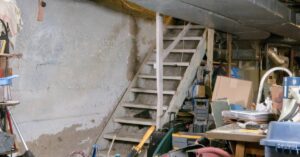
When you think you have found your dream house, be sure to inspect five key areas that are prone to damage over time. Even if you don’t see obvious problems, there may be issues lurking out of sight. If you are not qualified to check the following areas, hire a licensed home inspector before finalizing the home’s purchase.
Roof
The typical roof can last about fifteen to twenty years, give or take, according to roofing experts. But damage like broken or missing shingles along with chimney deterioration can occur due to high winds or heavy precipitation. Extreme temperatures can sometimes also lead to problems. Make sure the roof is intact along with functional gutters and downspouts that do not have breakage or leaks. Check the attic to see if moisture has been able to enter through the roof.
Attic
The attic may be prone to other difficulties besides roof leakage. Inadequate insulation could be raising the home’s heating bills. Mold and mildew could have developed from the moisture or dramatic temperature shifts. Look for infestations of insects like carpenter ants or hornets and wildlife, such as raccoons or bats. Ensure the rafters are still in good condition without weakening.
Walls
Check the walls in every room for signs of buckling or cracks. If the house sits on a hillside, the walls might lean downhill, so be sure they are still solid. Split drywall may suggest wall cracking problems, which are likely to get worse unless they are repaired. See if any of the walls are separating from the ceiling, the floor, or each other. Although minor chips can be easily fixed, larger problems should be evaluated to determine their cause.
Basement
Look around the basement or ask the home inspector to do so to find evidence of mold. Black mold, especially, needs to be mitigated before moving into the house if you decide to buy it. Check for termite damage, too, as that problem should be addressed by a pest control expert before more wood structures in the home are affected by these insects.
Foundation
Concrete foundations can begin to crumble due to outside erosion or the passing of time. A home’s foundation can also shift due to geophysical features like slanted land and other causes. Minor foundation damage can be addressed, but major problems could require excavation, which is costly.
A careful assessment of these problems can prevent expensive repairs later. Take time to fully evaluate a property of interest before finalizing the purchase.


